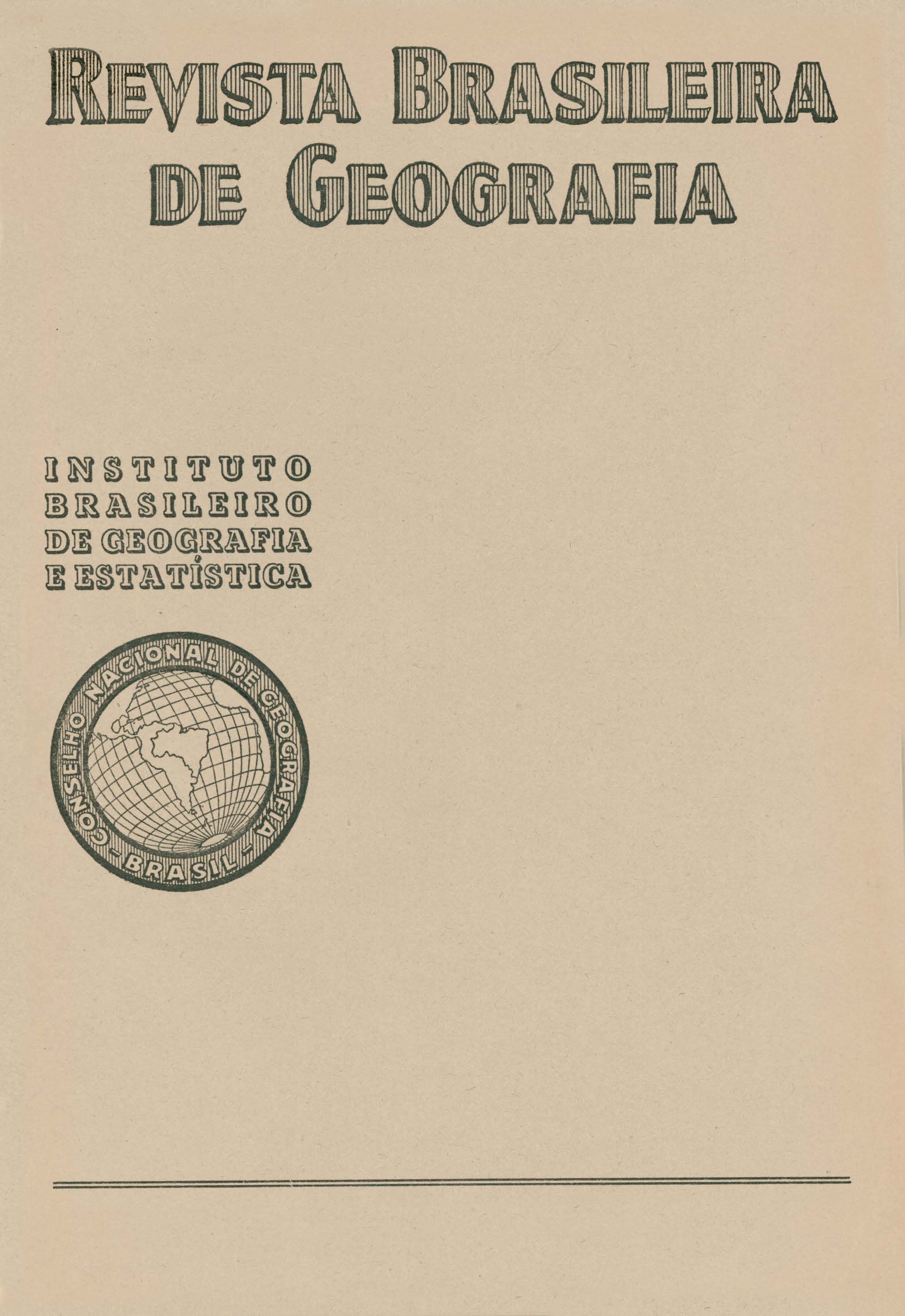Contribuição ao estudo da geografia da Região Sudoeste da Bahia
Palavras-chave:
Bahia;, Geografia;, Geografia Física;, Geomorfologia.Resumo
Professor Alfredo José Porto Domingues fixes the region that he presents and studies into four zones: "Grande Chapada" (Great Mesaland), "Zona da Encosta" (Foothill Zone), "Contraforte" (Escarpment), and the "Serra de Espinhaço" (Espinhaço Range). The zones are studied from the physical and human points of view.
The "Grande Chapada" to the west of the São Francisco River is a tabular land with a slight inclination that gives it the table-like appearance. The sandy mesa is the characteristic feature of this zone. The author then considers hydrography stating the fact that the hydrographic network is well divided and that in certain parts they follow a diaclastic pattern. Plant life is very thick and almost uniform throughout the region. After that, the author begins to deal with the sparse economic resources of the table-land, the transport system, and some of the important centers, such as, Santa Maria da Vitoria.
Next, he begins to study the zone to the east which is the "Zona da Encosta". This area is drained by the São Francisco and its tributaries, such as, the Carinhanha and the Corrente. He verified the fact that various types of crops are grown along the tributaries because those that run along the right bank are "cut" in the dry periods.
The author then brings up the study that he made south from Carinhanha and north from Bom Jesus de Lapa, emphasizing the transportation in this region compared to the others and also the type of life that is led on the farms on the riverbanks.
The "Zona do Contraforte" has a similar appearance to the other two zones, however, the central part is of various-shaped elevations. In this zone, there are a great number of lakes due to the impermeability of the granite rocks. The farms, spotted here and there, are located so as to take advantage of these lakes. While the far most important economic item here today is livestock, agriculture was practiced at one time. Besides a greater distribution of population, the author says that the cities here are much more mountainous and more densely populated because this zone has fast evaporation. The greatest number of springs also exist here. Santana stream is an exception to other areas in this zone as its mountains have the same dry winds. The author then deals with the location, development and function of the cities of Monte-Alto, Itaguaçu, Guanambi, Urandi, Ceraima, Pajeú-dos-Ventos and Riacho-de-Santana.
Lastly, the study of the "Zona do Espinhaço" is taken up. The zone runs north and south in almost a straight line, and is the divortium acquarum between the waters that drain into the tributaries of the São Francisco and those that enter the tributaries of the Contas river. After studying the vegetation, he treats of the agriculture, mineral exploration and the methods of transportation of the region. And, finally, the location, function and correlation of the chief centers:- Caitité (the agricultural center of the zone), Caldeira, Lagoa Clara, Lagoa Real, Santa Luzia, Brejinho-das-Ametistas, Ibiaçucê, Rio do Antônio, Caculé, Paiol, Irundiara and Jacaraci
As a completion for his work, the author makes a geomorphological study with two relief cuts, showing the physical aspects of the various zones of which he had written.






